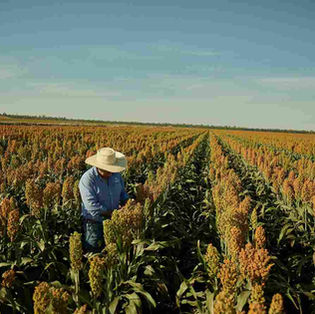
RESOURCES
INDUSTRY RESOURCES
ANIMAL WELFARE
Australian Animal Welfare Standards & Guidelines for Cattle
This document informs all those with responsibility for the care and management of cattle, of the minimum welfare requirement for all cattle in Australia. These standards and guidelines are being regulated into law by most State and Territory Governments.
Australian Animal Welfare Standards & Guidelines - Land Transport of Livestock
This document informs all those with responsibility for the land transport of livestock, of the minimum transport welfare requirement for all livestock in Australia. These standards and guidelines are being regulated into law by most State and Territory Governments.
Welfare Benefits of Providing Shade to Feedlot Cattle
This document explores what animal welfare means, the benefits of providing shade, and understanding the thermal regulation and shade seeking behaviours of cattle. Information in regard to cattle responses to shade, animal health and management strategies to optimise welfare with shade are also explored.
MLA's Transport Hub
The Transport Hub brings together everything you need to know about transporting livestock safely and humanely anywhere in Australia. Best practice livestock transport improves outcomes for livestock, boosts profits throughout the supply chain and contributes to the sustainability of the industry.
FEEDLOT MANAGEMENT
Feedlot Covered Housing Systems Best Practice Design And Management Manual
This manual, made by MLA, is built upon the best available knowledge from around the world for covered housing and shade systems, along with knowledge gained from visits to a variety of covered housing systems operational in Australia.
Final report: Assessment of the Australian Feedlot Enteric Methane Inventory equation
The aim of this study was to evaluate equations in the literature for predicting methane (CH4) emissions of beef cattle when fed tempered barley-based diets typical of the Australian feedlot industry.
A large database of methane measurements performed in respiratory calorimeters’ taken from beef cattle fed a range of barley-based feedlot diets was assembled and analysed.
Beef Cattle Feedlots Enterprise Manual
This manual brings together, from many sources, operational guidelines, plans of action and other resources for dealing with EADs. The purpose of the manual is to capture industry specific information aimed at government officers and beef cattle feedlot personnel who may be involved in an emergency animal disease EAD preparedness.
Handbook Of Best Practice Guidelines For The Australian Feedlot Industry
Developed by ALFA and MLA, the aim of the best management practice guide is to provide a concise handbook and reference document for feedlot operators and their employees to prompt improved management practices in the Australian feedlot industry.
Workplace Wellbeing Assessment Tool
The NSW government has developed a free digital tool called the Workplace Wellbeing Assessment. This tool allows your staff to share their views on what contributes to good mental health at work while also helping you identify clear and effective actions toward a mentally healthy and safe workplace. Help your staff feel heard and valued at the feedlot- access the tool below.
ENVIRONMENT
Feedlot cattle staging facilities | Best practice manual
This document provides examples and guidance on best-practice design and management for existing and new feedlot cattle staging facilities, feedlots, and adjacent grazing systems. It focuses on assisting lot feeders effectively managing the environment when feeding in staging facilities.
Code Of Practice
The National Beef Cattle Feedlot Environmental Code of Practice (the Code of Practice) is intended to provide nationally consistent requirements under state regulation for lot feeders and administrators regarding the environmentally relevant aspects of the establishment and operation of beef cattle feedlots.
MLA Sustainability Hub
Sustainability goes hand in hand with productivity, profitability and industry longevity. It sits squarely with our 2025 Red Meat strategy to double to value of our products as the trusted source of the highest quality protein and our industry ambition to be carbon neutral by 2030.
MLA's sustainability hub collates industry resources and case studies pertaining to the red meat industry.
Final report: Assessment of the Australian Feedlot Enteric Methane Inventory equation
The aim of this study was to evaluate equations in the literature for predicting methane (CH4) emissions of beef cattle when fed tempered barley-based diets typical of the Australian feedlot industry.
A large database of methane measurements performed in respiratory calorimeters’ taken from beef cattle fed a range of barley-based feedlot diets was assembled and analysed.
STANDARDS & GUIDELINES
Australian Animal Welfare Standards & Guidelines - Land Transport Of Livestock
This document informs all those with responsibility for the land transport of livestock, of the minimum transport welfare requirement for all livestock in Australia. These standards and guidelines are being regulated into law by most State and Territory Governments.
Australian Animal Welfare Standards & Guidelines For Cattle
This document informs all those with responsibility for the care and management of cattle, of the minimum welfare requirement for all cattle in Australia. These standards and guidelines are being regulated into law by most State and Territory Governments.
FEEDING & NUTRITION
Wet Harvest; Grain Receival, Storage & Feeding
The main areas of concern with a wet harvest include receiving high moisture,
sprouted and/or moldy grain. These grain characteristics can directly affect grain transfer efficiency, cattle performance, health and welfare. This resource can help feedlots manage a wet harvest.
MLA Best Practice Grain Processing Manual
This manual, specifically for Australian feedlot cattle aims to describe the best practice grain processing methods and technologies. This document is only available from MLA in hardcopy form. Please enquire with Dr. Matt Van der Saag at MLA (mvandersaag@mla.com.au) to obtain this document.
RESEARCH & DEVELOPMENT
Welfare Benefits Of Providing Shade To Feedlot Cattle
This document explores what animal welfare means, the benefits of providing shade, and understanding the thermal regulation and shade seeking behaviours of cattle. Information in regard to cattle responses to shade, animal health and management strategies to optimise welfare with shade are also explored.


















